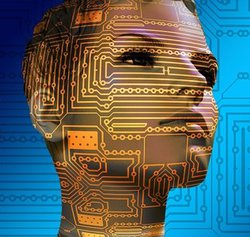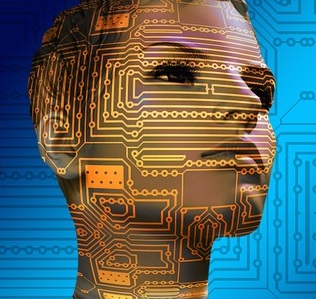
Oct. 19, 2016
By: Michael Feldman
The commercialization of artificial intelligence over the last several years is now getting the attention of governments, which are starting to think about the policy implications presented by these new technologies. A recent report published by the White House attempts to address the challenges presented by AI, but skirts one very important issue.
 The potential benefits of AI are well documented and are too numerous to catalogue here. Consider just the single example of autonomous vehicles. It’s not hard to imagine how taking human drivers out of the equation could lead to significant advantages in safety, energy efficiency, and personal mobility. The downstream effects would lead to a greatly reduced number of deaths and injuries from accidents, lower insurance costs, better use of fuels and other energy sources, and greater access to transportation for the young, old and infirmed. The economic advantages for the general public would be enormous and transformative.
The potential benefits of AI are well documented and are too numerous to catalogue here. Consider just the single example of autonomous vehicles. It’s not hard to imagine how taking human drivers out of the equation could lead to significant advantages in safety, energy efficiency, and personal mobility. The downstream effects would lead to a greatly reduced number of deaths and injuries from accidents, lower insurance costs, better use of fuels and other energy sources, and greater access to transportation for the young, old and infirmed. The economic advantages for the general public would be enormous and transformative.
On the downside, the risks are as serious as the rewards. Again taking the autonomous vehicles example, we can envision economic and workforce disruptions for the taxi and trucking industries, insurance companies, and automakers. There would be secondary disruptions in other transportation sectors (including infrastructure), as well as the travel industry. There are also associated challenges in cybersecurity and system failures that have to be dealt with, although these are not specific to autonomous vehicles.
Multiply those risks and rewards by the number of AI applications that will be working their way into sectors like healthcare, environmental protection, criminal justice, defense and intelligence, financial services, and scientific research, and you start to get an idea of the scope of challenges for public policy makers.
Which bring us to the US government’s first serious examination of the AI phenomenon, a report published by the White House’s National Science and Technology Council Committee on Technology. The 48-page treatise titled Preparing for the Future of Artificial Intelligence, examines the potential impact of AI on society and suggests some policy recommendations to deal with its effects.
Those recommendations focus mainly on how to accentuate the benefits of artificial intelligence, in particular by making sure the government takes advantage of AI in its own agencies, funding AI research, keeping abreast of the technologies, and putting programs in place that ensures the US workforce is AI-capable. What is mostly missing from the report is addressing the workforce disruptions that might befall entire industries due to the way artificial intelligence can replace human work. There is some text in the report that touches on this subject, which can be distilled down to this single paragraph:
“One important concern arising from prior waves of automation, however, is the potential impact on certain types of jobs and sectors, and the resulting impacts on income inequality. Because AI has the potential to eliminate or drive down wages of some jobs, especially low- and medium-skill jobs, policy interventions will likely be needed to ensure that AI’s economic benefits are broadly shared and that inequality is diminished and not worsened as a consequence.”
Given how the topics of income equality and job erosion have reached a fever pitch with the US public over the last few years, it seems like a glaring omission to bypass the issue in this first government-sponsored AI report. To be fair, the authors do state that the workforce policy issues that surround AI-enabled automation will be addressed in a separate White House working group that will initiate an inter-agency study on this issue.
A recently completed investigation in the UK tackles this topic more directly. A write-up at ZDNet describes how the country’s Science and Technology Committee recommended that a “Commission on Artificial Intelligence” be set up to deal with the social, ethical and legal issues surrounding the use of AI. Committee chair Dr. Tania Mathias noted the lack of attention this issue has received, saying “government leadership in the fields of robotics and AI has been lacking." The committee goes on to recommend that the UK government needs to apply much greater focus on education and training in order to deal with the workforce disruption that is likely to take place.
One can’t help wondering though how well the problem is understood, given the pace AI technology has been on over the last few years. For example, the focus on “automation” seems particularly misplaced, since AI, unlike traditional robotics that have been around for decades, has less to do with performing repetitive tasks than with providing high-level, ad hoc solutions. For example, the image recognition system in a self-driving car is not a robot doing some rote task; it’s an expert system that performs advanced patter recognition in manner that is largely non-repetitive from one instance to the next. Likewise, a digital paralegal does more than just offload tedious work at a law firm.
Although the relationship between unemployment and technology is hard to pin down, there is plenty of evidence that technology is displacing jobs in the workforce. In a recent analysis completed by Forrester Research and described here, the firm concluded that AI and related technologies will eliminate 16 percent of US jobs over the next decade, while creating just 9 percent new ones.
In addition, those 9 percent additional jobs are probably going to be higher up on the food chain than the ones they replaced. That suggest that AI is likely to exacerbate income inequality, which was a problem long before commercial artificial intelligence arrived on the scene. The theory is based on the observation that relatively few employees are needed to run a technology-based business that can ride atop the internet. Facebook, the poster child for this phenomenon, employs less than 15,000 workers and generates about $18 billion per year in revenue (2015). Averaged out, each employee brings in about $1.2 million per year. Because AI technologies tend to scale with even less human oversight, it’s not unreasonable to conclude that income inequality could get even worse.
If true, that contradicts the hope that the economic expansion provided by AI will be offset by job growth somewhere else. Historically, employment has always rebounded during economic disruptions, with the agricultural and industrial revolutions presented as authoritative proof. But there’s plenty of people who think AI will be different, since it encompasses a more universal capability that can supplant workers in a generalized manner.
A 2013 article in MIT Technology Review describes how, starting in 2000, job productivity and employment growth started to diverge. Over that period, productivity continued to climb, while employment growth started to flatten. The investigators of this phenomenon, Erik Brynjolfsson and Andrew McAfee, called this the “great decoupling,” and believe at least some of this is attributed to the effect of 21st century computer technology. Their contention was that information technology is destroying jobs faster than it’s creating new ones, and is also contributing to stagnating incomes. The thrust of their analysis is that these more advanced technologies are “encroaching into human skills in a way that is completely unprecedented,” which they believe will erode not just lower-wage jobs, but more lucrative, high-skill jobs in areas as diverse as medicine, law and education.
Not everyone agrees, of course. In that same 2013 article, John Leonard, a professor of engineering at MIT and a member of its Computer Science and Artificial Intelligence Laboratory (CSAIL), expressed doubts that robots or related technologies will be able to replace people so easily, declaring “That’s not going to happen in my lifetime at a massive scale. The semiautonomous taxi will still have a driver.” Three years later, such skepticism seems naïve.
Given all that, we can hope that the next White House working group will indeed address the workforce ramifications of AI head-on, and not just for the US, but for the rest of the industrialized world where these technologies are certain to be deployed. Governments don’t have to be overly concerned about supporting the advancement of AI; that’s going to happen organically. They need to figure out how to adapt public institutions and policy to deal with the aftermath.
